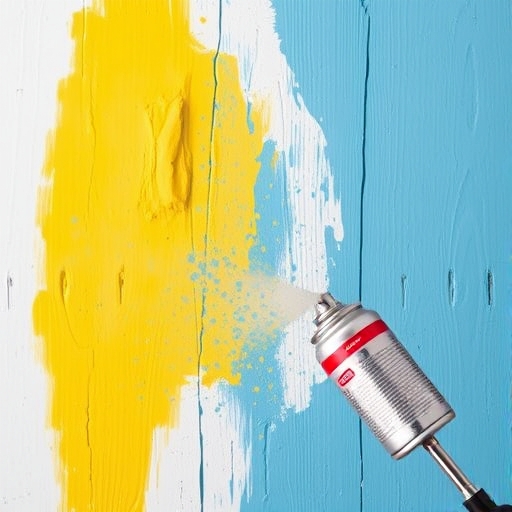How Long Does It Take Spray Paint to Dry?
Spray painting is a popular method for achieving a smooth, even coat on various surfaces, from furniture to automotive finishes. However, one of the most common questions that arise among both novice and experienced DIYers is: How long does it take for spray paint to dry? This article will explore the factors affecting drying times, types of spray paint, best practices for application, and tips to ensure the best results.
Understanding Spray Paint
Before diving into drying times, it’s important to understand what spray paint is and how it works. Spray paint is a type of paint that comes in an aerosol can. It consists of pigments, solvents, and propellants that allow paint to be distributed in a fine mist. When the spray is applied, the solvent evaporates, leaving behind the pigment to form a solid layer.
Types of Spray Paint
There are several types of spray paint available, each with its own drying characteristics:
- Acrylic Spray Paint: Fast-drying and water-based, ideal for indoor projects.
- Oil-Based Spray Paint: Slower drying time, more durable and suitable for outdoor use.
- Enamel Spray Paint: Offers a hard finish and is often oil-based, taking longer to dry.
- Lacquer Spray Paint: Dries quickly and provides a glossy finish, but can be challenging to work with.
- Type of Paint: Different formulations have unique drying times.
- Temperature: Warmer temperatures can accelerate drying, while colder conditions slow it down.
- Humidity: High humidity levels can prolong drying times.
- Surface Material: Porous surfaces may absorb paint and require longer drying times.
- Coat Thickness: Thicker applications take longer to dry than thinner layers.
- Touch Dry: The paint feels dry to the touch but is not yet ready for handling.
- Handle Dry: The paint can be handled without smudging but is not fully cured.
- Fully Cured: The paint has completely hardened and reached its maximum durability.
- Clean the Surface: Remove dust, grease, and old paint.
- Sand if Necessary: For a smoother finish, sand the surface lightly.
- Prime the Surface: Use a primer if you’re painting a porous or uneven surface.
- Temperature: Aim for temperatures between 65°F and 85°F (18°C to 29°C).
- Humidity: Try to work in low humidity conditions (below 50%).
- Ventilation: Ensure adequate airflow to help solvents evaporate.
- Multiple Coats: Instead of one thick coat, apply several thin coats. This not only dries faster but also reduces the risk of drips and runs.
- Overlap Strokes: Keep a consistent distance from the surface and overlap each stroke slightly.
- Follow Manufacturer’s Instructions: Always check the label for specific drying times.
- Avoid Touching: Resist the urge to touch or handle the painted surface until it is fully cured.
- Spraying in Direct Sunlight: This can cause the paint to dry too quickly, leading to an uneven finish.
- Ignoring Safety Precautions: Always wear a mask and work in a well-ventilated area to avoid inhaling fumes.
- Skipping the Test Spray: Test on a scrap piece or inconspicuous area to see how the paint adheres and dries.
- Increase Airflow: Use fans to circulate air around the painted area.
- Heat: Use a heat gun or space heater (at a safe distance) to warm the area slightly.
- Thin Coats: Apply thinner coats to reduce drying time.
Factors Affecting Drying Time
The drying time of spray paint can vary significantly based on several factors:
Typical Drying Times
Understanding the typical drying times for various types of spray paint can help you plan your project effectively. Here’s a general overview:
| Type of Spray Paint | Touch Dry | Handle Dry | Fully Cured |
|---|---|---|---|
| Acrylic | 15-30 minutes | 1-2 hours | 24 hours |
| Oil-Based | 30-60 minutes | 5-8 hours | 7 days |
| Enamel | 1-2 hours | 4-6 hours | 7 days |
| Lacquer | 15-30 minutes | 1-3 hours | 24-48 hours |
Touch Dry vs. Handle Dry vs. Fully Cured
Best Practices for Spray Painting
To ensure optimal drying times and a smooth finish, follow these best practices:
1. Prepare the Surface
2. Choose the Right Environment
3. Apply Thin Coats
4. Allow Proper Drying Time
Common Mistakes to Avoid
To achieve the best results with spray paint, avoid these common pitfalls:
Frequently Asked Questions (FAQ)
How can I speed up the drying time of spray paint?
Can I apply a second coat before the first coat is dry?
It is generally advisable to wait until the first coat is at least touch dry before applying a second coat. However, if you are using a fast-drying spray paint, you may be able to apply a second coat within the recommended time frame on the label.
What happens if I don’t allow spray paint to dry properly?
If spray paint is not allowed to dry properly, it can lead to smudging, running, and an uneven finish. Additionally, it may take longer to cure, affecting the durability of the paint.
Is it safe to spray paint indoors?
If you are using spray paint indoors, ensure that the area is well-ventilated. Use fans and open windows to minimize fumes. Always wear appropriate safety gear, such as masks and gloves.
Conclusion
The drying time of spray paint can vary based on multiple factors, including the type of paint, environmental conditions, and application techniques. By following best practices and understanding the drying stages, you can achieve a professional-looking finish on your projects. Whether you are painting furniture, crafts, or automotive parts, patience and preparation are key to success.
By keeping these tips and guidelines in mind, you can enhance your spray painting skills and achieve the results you desire. Happy painting!

